Bluetooth Car charger BC06
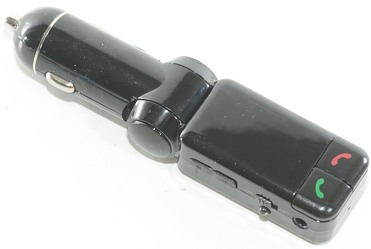
Official specifications:
-
Bluetooth Version: V2.1 + EDR
-
Rated Working Voltage: 12V –24V
-
Limit Working Voltage: 9V –26V
-
USB Output: 5V/2A
-
Working Temperature: 0 to 50?
-
Play Formats: MP3/WMA
-
SNR: >60dB
-
Degree of Distortion: < 0.1%
-
Frequency Response: 20Hz - 15Khz
-
Resolution of right and left Channel: > 60 db
-
Bluetooth Sound Processing: A2DP
-
Bluetooth Transmission Distance: 10M
-
Effective Distance of Bluetooth Microphone: 0.5 - 2M
-
FM Frequency: 87.5 - 108MHZ
-
FM Mode: Stereo Digital PLL Frequency Locking
-
Material: ABS
-
Color: Black
-
Dimensions: (4.33 x 0.98 x 0.67)” / (11 x 2.5 x 1.7)cm (L x W x H)
-
Weight: 1.20 oz / 34 g
I got it from Tmart
This device has many function, I will only test the usb charger function and then do a fast check of the other functions.
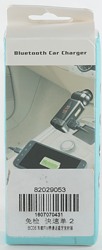
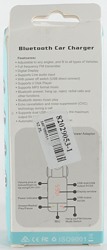

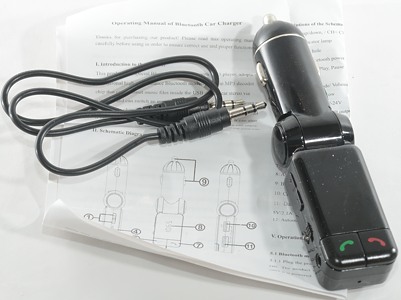
The box included the device, a cable and the instruction sheet.
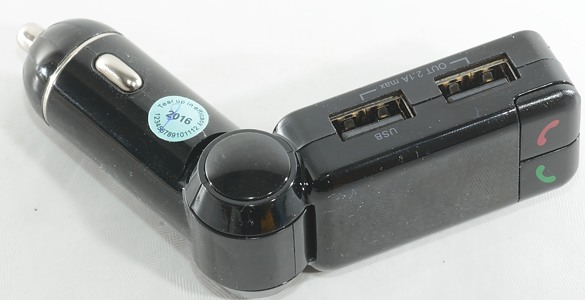
For best visibility of the display it is possible to angle it.

On this side is the power on/off switch, the up/down switch (It controls: volumne, music number, channel) and input from external music player. The led shows when the device is connected to 12V.

The red and green phone switches sends message to a bluetooth connected phone and is also used for switching between bluetooth and usb playing. Above them is the display that shows FM frequency or music number.
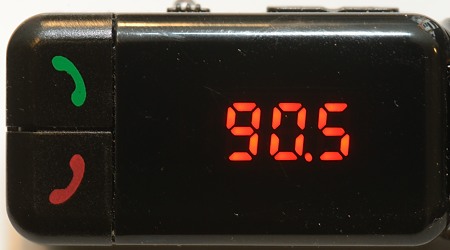
Here the display is on and showing FM frequency.

The two usb output can be used for charging, the one marked “usb” can also be used for a memory stick with music on it.

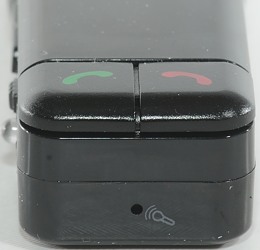
The small hole is the microphone that is used for hands free phoning.
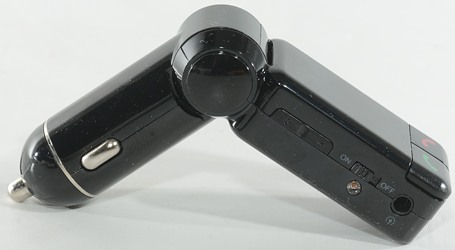
Check of functions
I tried it in a small car with a iPhone.
Playing music from the iPhone on the car stereo worked fine.
Playing from a usb stick also works fine.
The hands free function also worked fine, there was some car noise, but not that bad (It was tried in a city at fairly low speed).
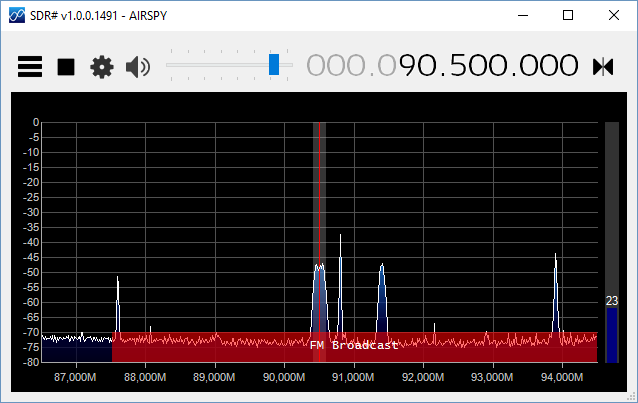
The frequency setting is fairly precise (The adapter was adjusted to 90.5MHz).
Range is short, in my test lab less than two meters, but that will depend on receiver and receiver antenna.
Measurements
-
Power consumption when not charging is about 5mA in off mode and 55mA in on mode at 12V.
-
Charging will work in off mode.
-
The two outputs are in parallel.
-
No individual port overload protection.
-
The port marked usb can be used to play usb memory sticks and as charger.
-
The other port is coded as usb charger (DCP)
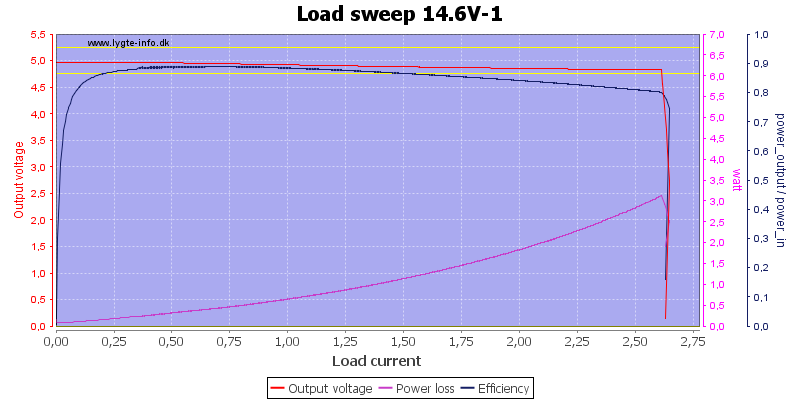
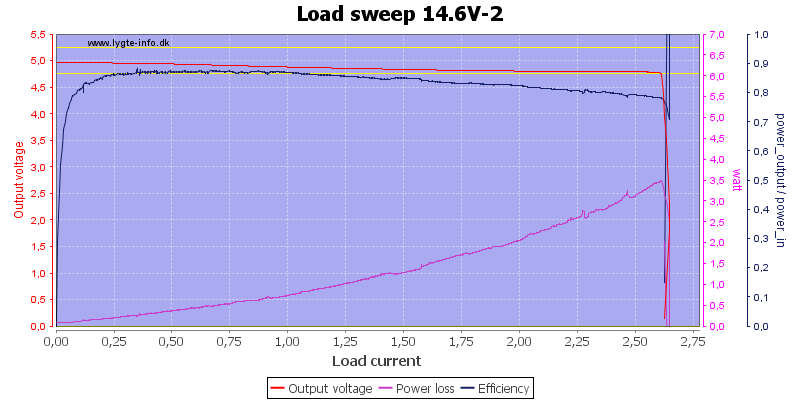
The two outputs deliver exactly the same power, around 2.6A.
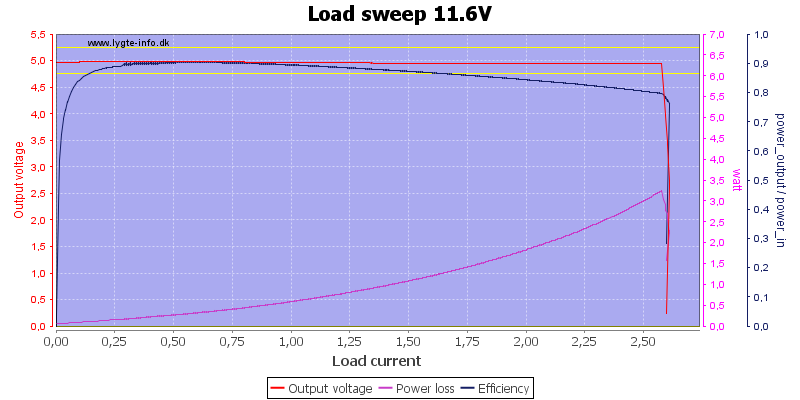
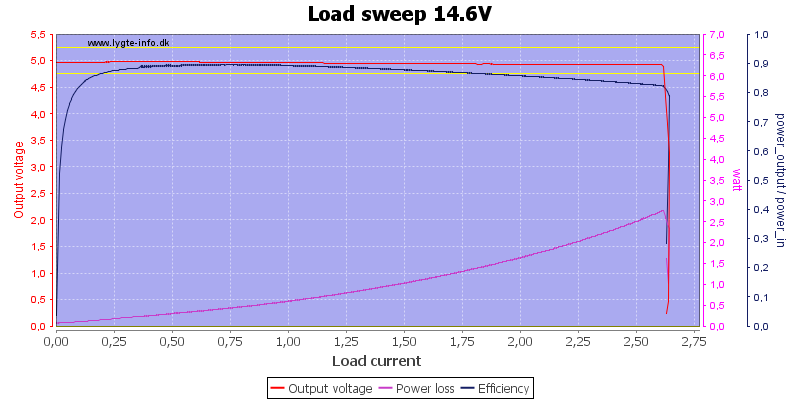
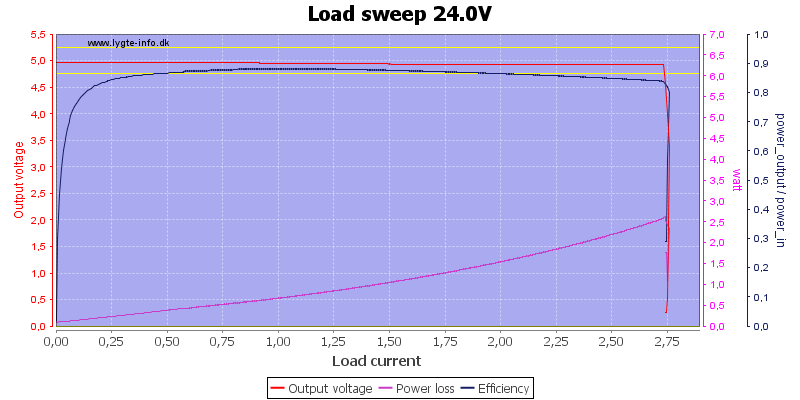
When used together it is also 2.6A. This is low enough that individual port protection is not needed, but also means that the charger can only do one high speed charging at a time.
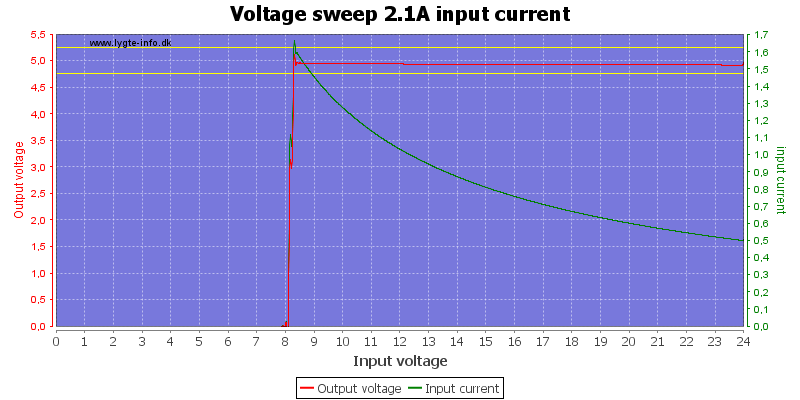
The current consumption from the car will depend on the actual car voltage.
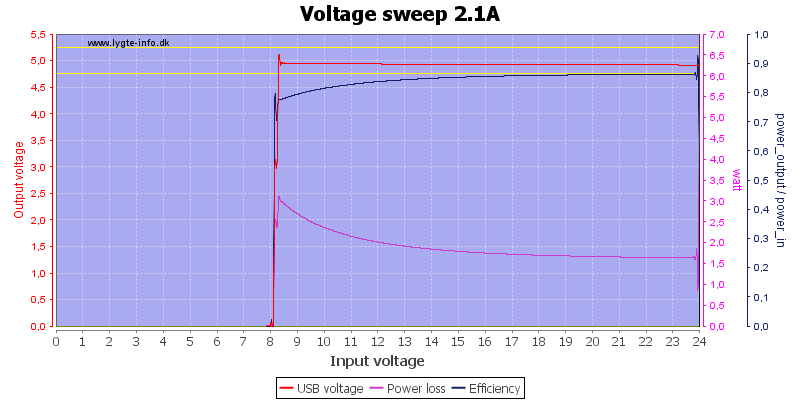
The device works down to 8 volt.

With the device off the current consumption is around 5mA at 12V and 4mA at 24V
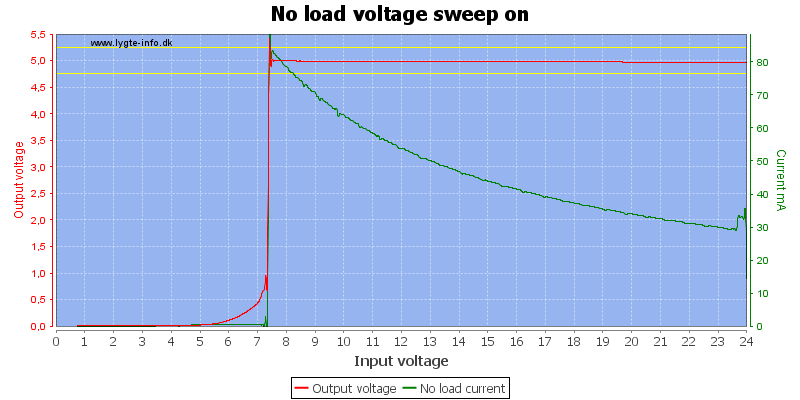
Turning the device on the current increases to about 55mA at 12V and 30mA at 24V
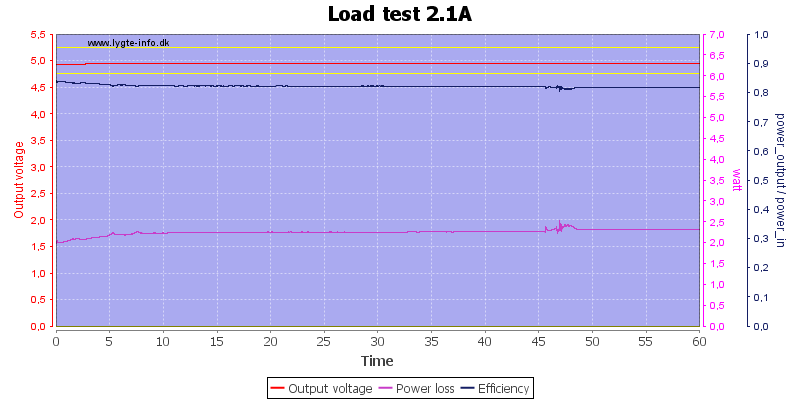
There is no problem delivering the rated 2.1A for 1 hour.
The temperature photos below are taken between 30 minutes and 60 minutes into the one hour test.
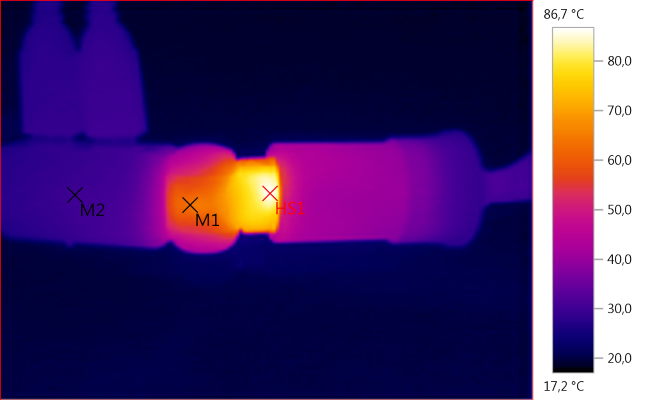
M1: 63,5°C, M2: 30,0°C, HS1: 86,7°C
The charge electronic is placed in the part that goes into the car socket and it gets fairly hot.
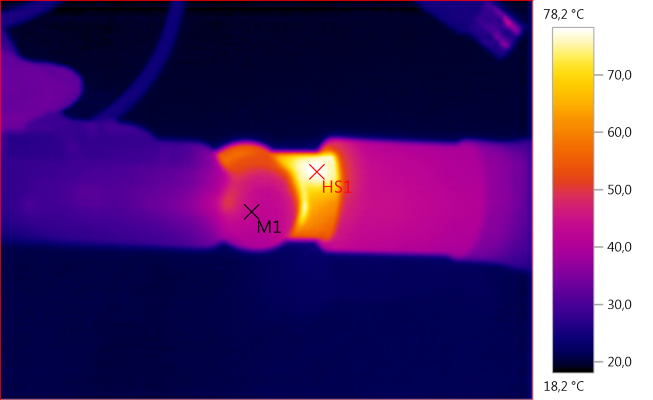
M1: 43,8°C, HS1: 78,2°C

At 0.5A with 12V input the noise is 22mV rms and 168mVpp.

At 1A with 12V input the noise is 22mV rms and 168mVpp.
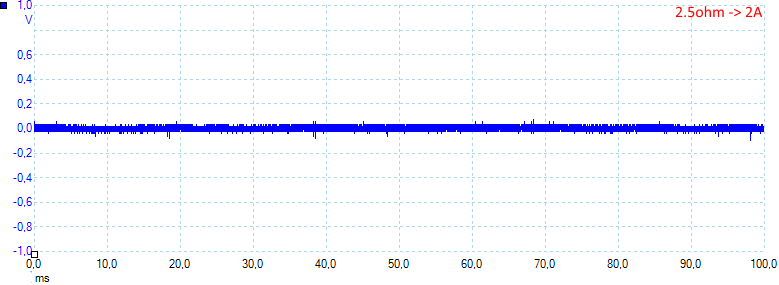
At 2A with 12V input the noise is 23mV rms and 163mVpp.
Tear down
There are no screws visible on the device, it can be opened in a non-destructive way.

Unscrewing the tip reveals a fuse, this is very common on car adapters.
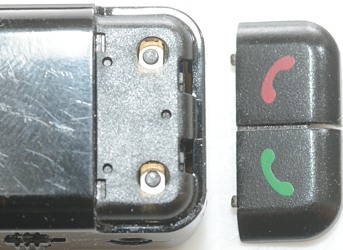
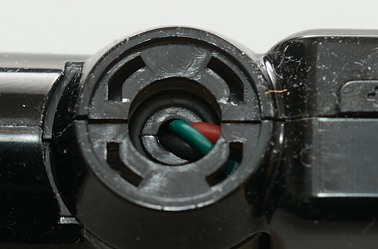
The phone buttons and the two round covers can fairly easy be removed. The covers needed a spudger.
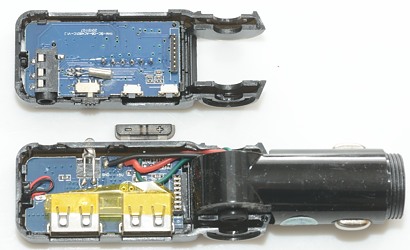
Using the spudger a bit more around the edge and I could open it fairly easy.

Here are all the parts, there was one screw inside (To keep a circuit board in place).
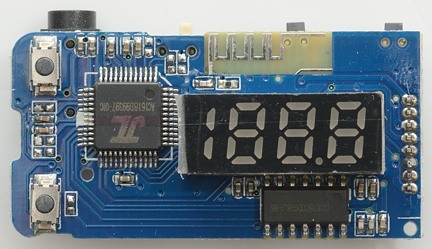
This is the main electronic board for all the functions, just about anything is done by the square chip. The area without blue covering is the bluetooth antenna.

All switches and the analog input is placed on the other side, there is also a crystal to keep the frequencies precise.
The display only has 6 connections, this means it must have a driver inside.
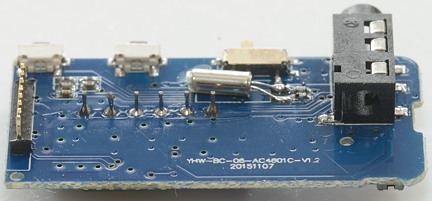
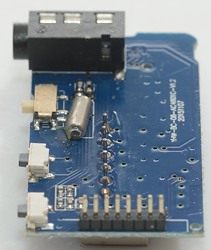
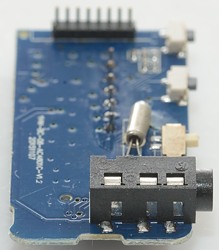
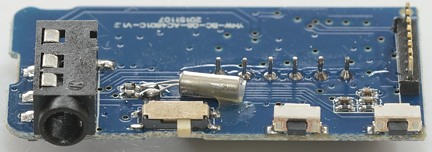
One slide switch for power and two buttons for up/down.
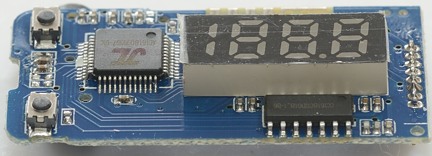
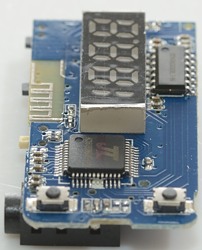
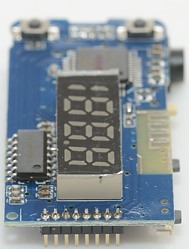
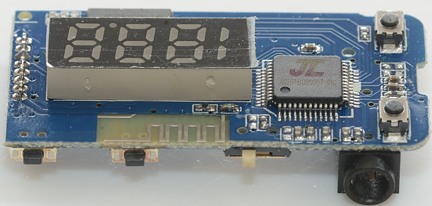

The usb connection board, it has 3 wire attached: GND, +5V and ANT, the last one must be the FM antenna.
The small black device connected with two wires is the microphone.
The connector to the top board must have signals for: +5V, GND, 2xmicrophone, 2xusb data pins, FM antenna (That was 7 pins, but the connector has 8).
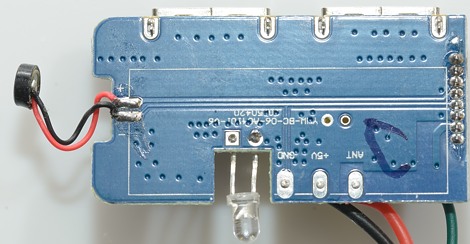
The microphone connections goes directly to the connector.

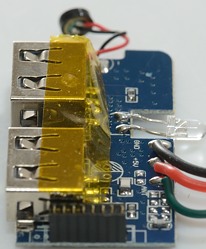
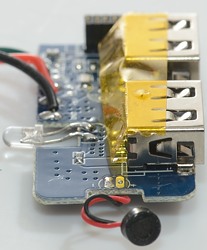
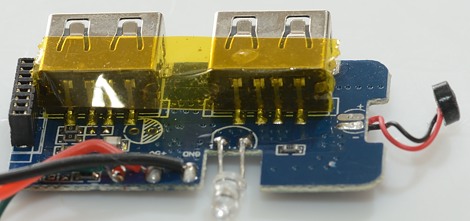

The switcher, with two capacitors and one inductor.
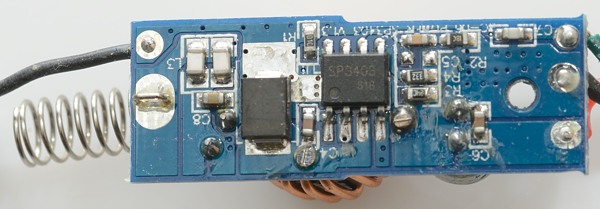
On this side is the switcher IC and a large rectifier diode. The ANT signal is coupled to the cars +12V through a capacitor (C7), nice way to get the signal as close to the radio as possible.
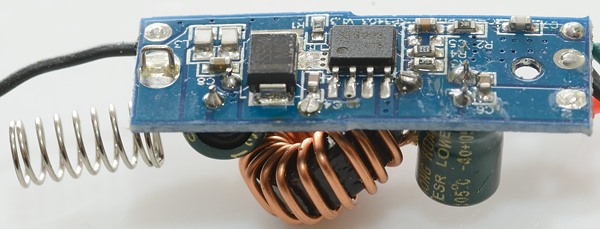
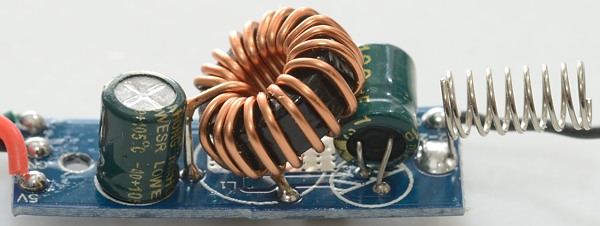
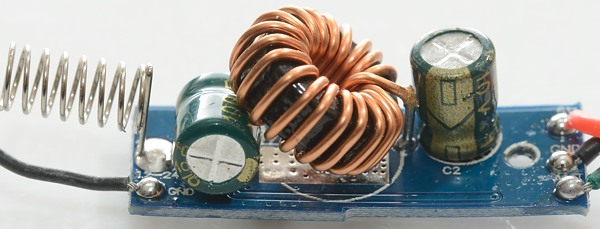
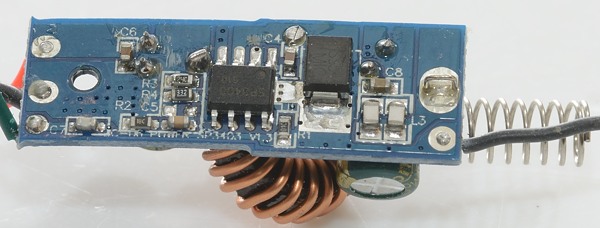
Being a 12/24V device there is no need to test with high voltages.
Conclusion
This is an interesting device with many functions, many of these functions are not needed in a modern car (It may have built-in bluetooth and usb player). The construction is not super high quality, but it works.
Playing from a usb stick is a bit limited with only next track and previous track selections. From a phone the selection is done on the phone.
For a car without all the modern electronic this may be a very nice upgrade, especially together with a smartphone.
Notes
The usb charger was supplied by Tmart for a review.
I did like it enough that I put it together again after the teardown.
Index of all tested USB power supplies/chargers
Read more about how I test USB power supplies/charger